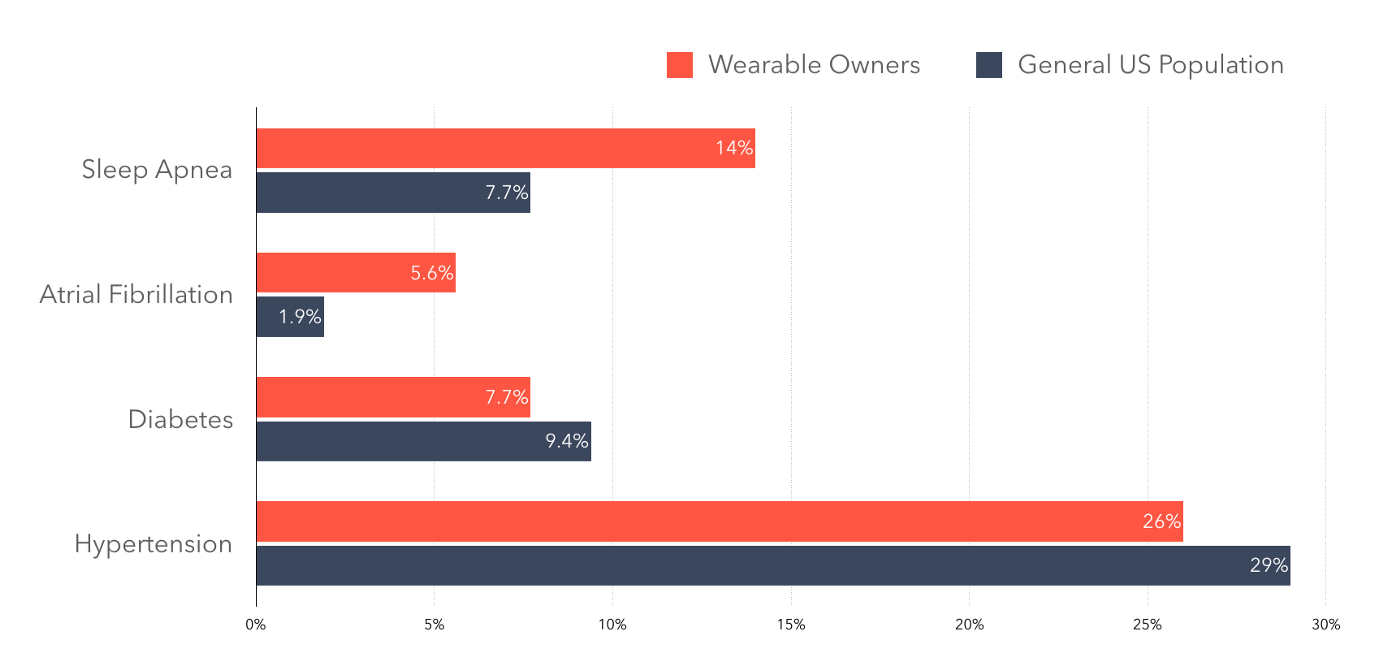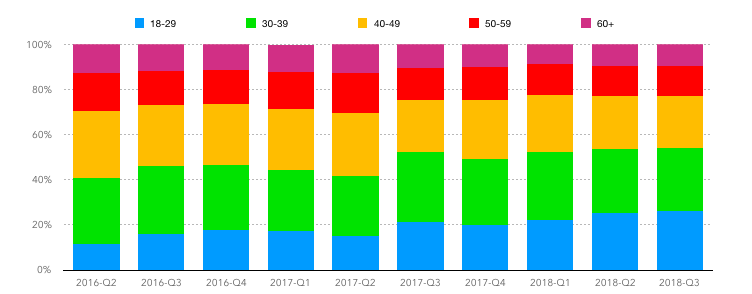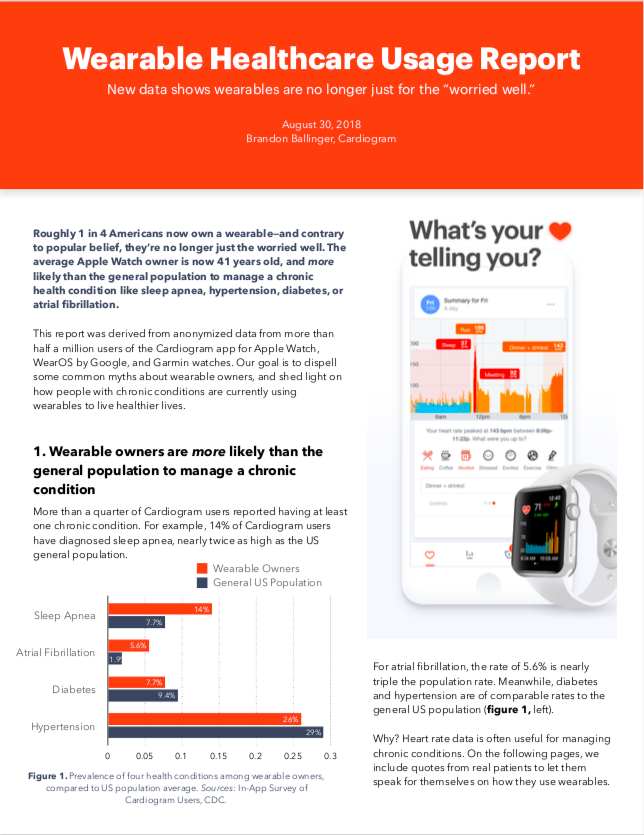1 in 4 Americans now own a wearable. While it’s often assumed that those who purchase a wearable consist of the “worried well,” the data says otherwise—among Cardiogram users, the average Apple Watch owner is now 41 years old, and more likely than the general population to manage a chronic condition.
Today, we’re releasing our first Wearable Healthcare Usage Report, based on anonymized data from more than half a million Cardiogram users. The full report is below, but here are some highlights.
Wearable owners are more likely to manage a chronic condition than the general population
Surprisingly, those who purchased a wearable appear to be more likely than average to have a chronic condition. In fact, many of our users purchased a wearable in order to manage a chronic condition.

The quote above tells us why — heart rate data (along with other sensors) can help people with chronic conditions take back control of their lives.
Wearable owners are diverse in age - and needs
The average Apple Watch owner is 41 years old. In 2018 so far, 9.2% of wearable owners were over the age of 60, and 23% are over the age of 50. The breakdown of age ranges has been surprisingly consistent from 2016 to 2018:



This diversity is an important reminder that wearable programs need to fit a very wide range of needs—a range beyond that considered in traditional corporate wellness programs.
Get the report
Want to learn more? You can download the full Wearable Healthcare Usage Report here. Let us know if you have questions or comments!



